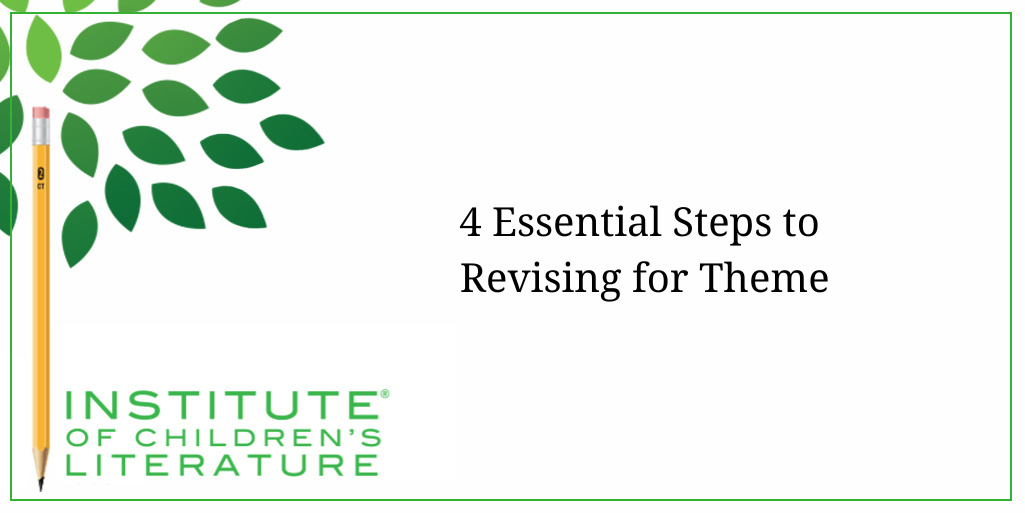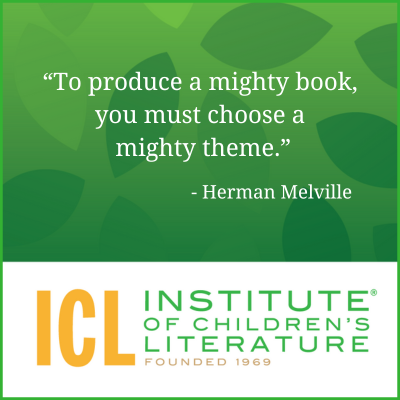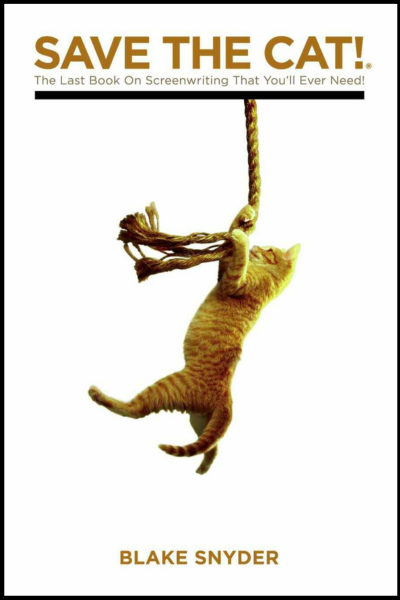
5 Ways Writers Can Prep for 2025 Goal Setting
Before we roll on to the new writing year, let’s harness our optimism for the blank slate before us and prepare for our 2025 Goal Setting just for writers.

Because I am such a plot-focused writer, my attention tends to be on plot and character as I write, and it’s not unusual for me to have no clear idea about my theme until the story is written. But theme is vitally important to a successful story, so even if it wasn’t a step you gave much thought to during the writing, it becomes a step of its own in the revision process.
One of the first things you need to do in revising for theme is discover what the theme of the piece actually is. You may have one in mind. You may not. But the best way to revise for them is to consider what elements of theme are already there.

One place to look for your theme is in how the main character (and possibly other characters) changes during the course of the story. Suppose, for instance, your main character is the “chosen one” who is destined to save the world. He believes he is meant to do this thing on his own. But mostly the poor guy runs into roadblocks of his own making. He may have accepted his destiny, but he sees it as something that’s all about him. Then, through the story, you may have introduced more characters that help him or simply shake him out of his own prideful stubbornness.
In a situation like that, you might think of the theme as “no one accomplishes anything of value all on their own.” Or you may think of it as “it takes a team to win.” The more you tinker with exactly how you see the theme in the piece, the better you can begin the process of making the theme cleaner and clearer in the story. That doesn’t mean you have to sneak in ways to say it over and over. Instead, it means you look at how it is illustrated by the actions of the characters and whether it’s handled well for the whole piece.
For example, suppose early on the character is intent on doing things his own way. Things are great, but eventually, he gets a team and things begin to get better. And he seems to be growing into a better person as well. But in the end, he must leave all his friends behind and go a totally different way on his own to bring the story to an end.
That would make for a muddy theme. Did the extra characters help or hinder? What was the purpose of them anyway? If the theme is muddy, you may want to think about why. Did it come about because you changed how you saw the story or the character? Did it happen because you thought certain things were required of a “destined hero” story? In a muddy story theme, the true theme may be hiding under some unfortunate choices, so you have to decide what the true theme is and then do what you can to reveal it better.

For example, in the case of the “destined one” story above, the main character might have a scene where he leaves home and he says, “This is my destiny, and I have to do it alone.” Then another character says, “Nothing good ever comes from being alone.” The main character might dismiss the words. After all, the secondary character has never had a destiny. He doesn’t know how it works. But as the story unfolds, the theme will slowly but surely manifest in the scenes, choices, characters, and actions that unfold. But it will all begin with that first revelation of the theme.
Theme can be stated early on in a very bold way, or it can be more subtle. In a story where the theme is going to be “heroism is fueled by sacrifice,” I might have someone joke that they’d never be a hero because they’re too self-centered. That’s a kind of subtle stating of the theme. It suggests the theme but doesn’t reveal it in an “Aesop’s fable” sort of way. This kind of subtle hinting at the theme early on prepares the reader to take notice of the theme (subconsciously or consciously) as it unfolds.
Suppose I decided to write something with the theme of “sacrifice is at the heart of friendship.” My main character may be lonely, maybe in a new situation. And with the theme I intend to illustrate, I might have him say, “I’d do anything to have a friend to do stuff with.” This might set him up to be preyed upon by a false friend who expects my main character to be the one who is always doing and giving. Then someone else will come along. Someone who shows himself to be the true friend. The person who is willing to risk and potentially be hurt for the sake of friendship. In that, my theme would play out in the story and that initial statement about friendship would prepare us for what came later.
Once you know what the theme you wanted for this piece is and you’ve made sure you gave the reader an early hint by saying the theme aloud (boldly or subtly), then you’re going to want to be sure you’re returning to the theme over and over throughout.

The story of the boy who was learning about friendship would be trying to be a friend by giving and giving, thus hitting touchpoints, but it’s when another character comes in to show that real friendship reciprocates that giving that the theme really blooms completely.
For a theme to work in a story, you should never wander too far from it. It doesn’t have to be in every moment or every scene, but it should have its trail of breadcrumbs throughout.
Revising for theme means reading and looking for those breadcrumbs. If you’ve gone too long without any, consider whether you might drop one.
It’s very important that you don’t give in to the urge to have a moral of the story moment at the end. Editors and agents really hate preachy stories. But theme, by its very nature, is a sharing of truth, so stating it flat out can sound preachy. Still, it’s an important part of the story, so you will want to touch it again at the end. For instance, at the end of the story about the boy who was trying to be a friend to someone who was all about himself.

The new friend might respond, “But what about, Jack? I figured you’d go with him.”
The main character could then say something like, “Naw, I’d rather go with a friend.”
That would be a way to restate the theme without giving it a “moral of the story” sound. It would also bring us back to the beginning when the main character so wanted a friend to do things with. He now has one.
So remember to keep theme in mind as you work through your revising. Make sure you can name the theme of the story. [Note: some publishers call it “the big idea” instead of the theme, but they are the same thing.] Here’s a quick checklist for your theme-based revision.
Make sure you give the reader:
By revising for theme, you’ll have a theme that adds to the depth and power of your story and gives it a spot to linger in the mind of the reader for a long time to come.
With over 100 books in publication, Jan Fields writes both chapter books for children and mystery novels for adults. She’s also known for a variety of experiences teaching writing, from one session SCBWI events to lengthier Highlights Foundation workshops to these blog posts for the Institute of Children’s Literature. As a former ICL instructor, Jan enjoys equipping writers for success in whatever way she can.

Before we roll on to the new writing year, let’s harness our optimism for the blank slate before us and prepare for our 2025 Goal Setting just for writers.

Writers can be thin-skinned when it comes to getting feedback on their work. Let’s look at 4 ways to positively deal with constructive criticism!

Rejection is part of the territory when it comes to being a writer. Today we offer reflection for writers to help redirect your efforts after a rejection.
1000 N. West Street #1200, Wilmington, DE 19801
© 2024 Direct Learning Systems, Inc. All rights reserved.
1000 N. West Street #1200, Wilmington, DE 19801
© 2024 Direct Learning Systems, Inc. All rights reserved.
1000 N. West Street #1200, Wilmington, DE 19801
© 2024 Direct Learning Systems, Inc. All rights reserved.
1000 N. West Street #1200, Wilmington, DE 19801
© 2024 Direct Learning Systems, Inc. All rights reserved.

1000 N. West Street #1200, Wilmington, DE 19801
© 2025 Direct Learning Systems, Inc. All rights reserved.

1000 N. West Street #1200, Wilmington, DE 19801
©2025 Direct Learning Systems, Inc. All rights reserved. Privacy Policy.
1 Comment